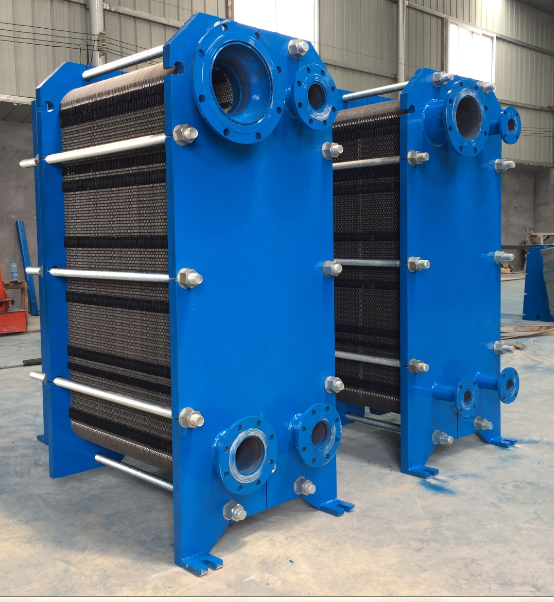
The plate heat exchanger is currently utilized extensively in the energy, chemical, electric power, light industrial, petroleum, and other sectors. Benefits of titanium heat exchangers include their excellent heat transfer efficiency, smooth appearance without scaling layer, high strength, low specific gravity etc. As a result, it is frequently utilized in a variety of industries including aircraft, marine engineering, petroleum, chemical, medical and so on.
Overview
The titanium plate heat exchanger is a novel type of high efficiency heat exchanger made out of a series of corrugated metal plates. Heat is transferred between the plates via a small rectangular channel produced between the several plates. When compared to the standard shell and tube heat exchanger, its heat transfer coefficient is considerably greater in the same flow resistance and pump power consumption, and it has the potential to replace the shell and tube heat exchanger in the relevant scale.
Austenitic stainless steel, titanium and titanium alloys, nickel and nickel alloys, and other cold rolled thin plates are popular materials used for plates in the heat exchanger sector. The titanium plates form a plate heat exchanger, which offers several benefits over tubular heat exchangers and a significant competitive advantage in the market.
Structure
The main parts of the titanium plate heat exchanger are the frame and the titanium plates. The plates are made of titanium sheets that have been pressed into different shapes of corrugations. There are also holes in the four corners of the plate for the media flow. Rubber gaskets seal the holes around the edge of the plate and in each corner. The frame is made up of a fixed pressing plate, a hook pressing plate, upper and lower guide rods and clamping bolts. The plate heat exchanger is installed in the form of superimposed plates on the fixed pressure plate, hooked in the middle of the pressure plate, and then clamped with clamping bolts.
Features
- High efficiency and energy saving: Its heat transfer coefficient is 3000~4500 kcal/m2-℃-h, which is 3~5 times higher than the thermal efficiency of shell and tube heat exchanger.
- Compact structure: The heat exchanger’s plate layout is exact. Plate heat exchangers cover less area and use less space than other types of heat exchangers.Shell and tube heat exchangers cover just 1/5 as much area as plate heat exchangers.
- Easy to clean and disassemble: Plate heat exchanger by the clamping bolts will be fastened solid plate clamping, allowing for easy disassembly and installation, as well as cleaning at any time. In addition, because the plate’s surface is clean, scale formation is difficult.
- Long service life: Plate heat exchangers made with pressed titanium alloy plates are resistant to a range of corrosive environments.Meanwhile, the rubber gasket may be changed as needed, and it is designed to be easily disassembled and maintained.
- Well-adapted: Plates of plate heat exchanger are the self-reliance components.It may be raised or decreased based on the needs of the process.It can be applied to the requirements of a variety of different processes.
- No string liquid:A drain channel is included in the plate heat exchanger sealing groove. As a result, there is no media collusion. The medium is always ejected outwardly, even when a leak develops.